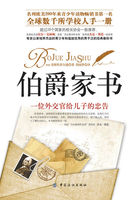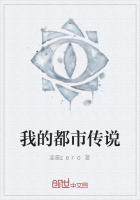Young Vail applied to his father, who was a man of enterprise and intelligence. He it was who forged the shaft of the Savannah, the first steamship which crossed the Atlantic. Morse was invited to Speedwell with his apparatus, that the judge might see it for himself, and the question of a partnership was mooted. Two thousand dollars were required to procure the patents and construct an instrument to bring before the Congress. In spite of a financial depression, the judge was brave enough to lend his assistance, and on September 23, 1837, an agreement was signed between the inventor and Alfred Vail, by which the latter was to construct, at his own expense, a model for exhibition to a Committee of Congress, and to secure the necessary patents for the United States. In return Vail was to receive one-fourth of the patent rights in that country. Provision was made also to give Vail an interest in any foreign patents he might furnish means to obtain. The American patent was obtained by Morse on October 3, 1837. He had returned to New York, and was engaged in the preparation of his dictionary.
For many months Alfred Vail worked in a secret room at the iron factory making the new model, his only assistant being an apprentice of fifteen, William Baxter, who subsequently designed the Baxter engine, and died in 1885. When the workshop was rebuilt this room was preserved as a memorial of the telegraph, for it was here that the true Morse instrument, such as we know it, was constructed.
It must be remembered that in those days almost everything they wanted had either to be made by themselves or appropriated to their purpose. Their first battery was set up in a box of cherry-wood, parted into cells, and lined with bees-wax; their insulated wire was that used by milliners for giving outline to the 'sky-scraper' bonnets of that day. The first machine made at Speedwell was a copy of that devised by Morse, but as Vail grew more intimate with the subject his own ingenuity came into play, and he soon improved on the original. The pencil was discarded for a fountain pen, and the zig-zag signals for the short and long lines now termed 'dots ' and 'dashes.'
This important alteration led him to the 'Morse alphabet,' or code of signals, by which a letter is transmitted as a group of short and long jets, indicated as 'dots' and 'dashes' on the paper. Thus the letter E, which is so common in English words, is now transmitted by a short jet which makes a dot; T, another common letter, by a long jet, making a dash; and Q, a rare letter, by the group dash, dash, dot, dash. Vail tried to compute the relative frequency of all the letters in order to arrange his alphabet; but a happy idea enabled him to save his time. He went to the office of the local newspaper, and found the result he wanted in the type-cases of the compositors. The Morse, or rather Vail code, is at present the universal telegraphic code of symbols, and its use is extending to other modes of signalling-for example, by flags, lights, or trumpets.
The hard-fisted farmers of New Jersey, like many more at that date, had no faith in the 'telegraph machine,' and openly declared that the judge had been a fool for once to put his money in it. The judge, on his part, wearied with the delay, and irritated by the sarcasm of his neighbours, grew dispirited and moody. Alfred, and Morse, who had come to assist, were careful to avoid meeting him. At length, on January 6, 1838, Alfred told the apprentice to go up to the house and invite his father to come down to see the telegraph at work. It was a cold day, but the boy was so eager that he ran off without putting on his coat.
In the sitting-room he found the judge with his hat on as if about to go out, but seated before the fire leaning his head on his hand, and absorbed in gloomy reflection. 'Well, William ?' he said, looking up, as the boy entered; and when the message was delivered he started to his feet. In a few minutes he was standing in the experimental-room, and the apparatus was explained. Calling for a piece of paper he wrote upon it the words, 'A PATIENT WAITER IS NO LOSER,' and handed it to Alfred, with the remark, 'If you can send this, and Mr. Morse can read it at the other end, I shall be convinced.' The message was transmitted, and for a moment the judge was fairly mastered by his feelings.
The apparatus was then exhibited in New York, in Philadelphia, and subsequently before the Committee of Congress at Washington. At first the members of this body were somewhat incredulous about the merits of the uncouth machine; but the Chairman, the Hon. Francis O. J. Smith, of Maine, took an interest in it, and secured a full attendance of the others to see it tried through ten miles of wire one day in February.
The demonstration convinced them, and many were the expressions of amazement from their lips. Some said, 'The world is coming to an end,'
as people will when it is really budding, and putting forth symptoms of a larger life. Others exclaimed, 'Where will improvements and discoveries stop?' and 'What would Jefferson think should he rise up and witness what we have just seen?' One gentleman declared that, 'Time and space are now annihilated.'
The practical outcome of the trial was that the Chairman reported a Bill appropriating 30,000 dollars for the erection of an experimental line between Washington and Baltimore. Mr. Smith was admitted to a fourth share in the invention, and resigned his seat in Congress to become legal adviser to the inventors. Claimants to the invention of the telegraph now began to spring up, and it was deemed advisable for Mr. Smith and Morse to proceed to Europe and secure the foreign patents.
Alfred Vail undertook to provide an instrument for exhibition in Europe.















